|
Advertisement / Annons: |
Astronomy Science data |
Content: |
I, List of objects with big parallax:How to create a list of objects with parallax bigger than 1 arcsec:My first try to get out some data from the Gaia archive. I start with something very simple, a list of all objects with a parallax bigger then 1 arcsec. That are objects at a maximum distance of 1 parsec (3.26 light years) from our Sun's barycenter. First I tried with 0.5 arcsec but get almost 500 objects and all could not be stars. Gaia archive:Below is the page / link to start from: 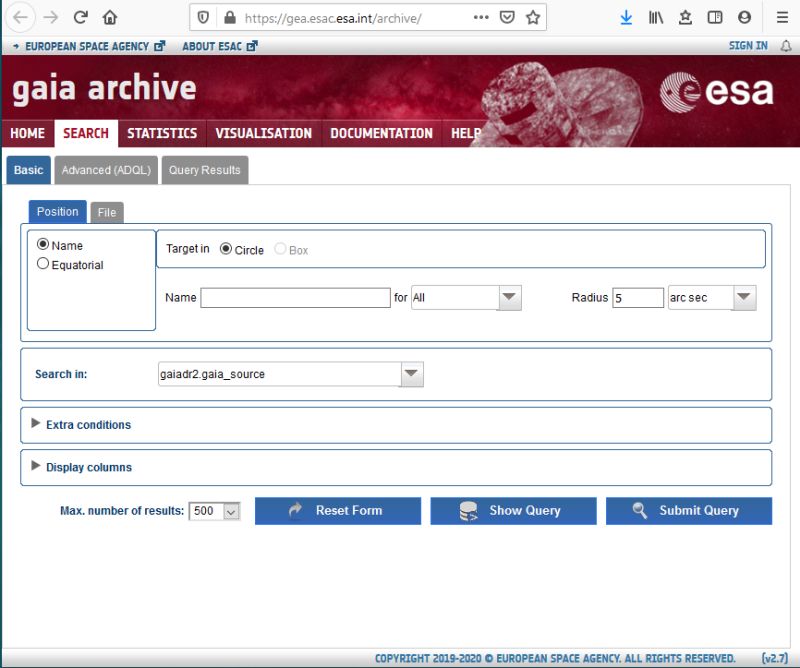
I use the Basic page to start with. Expand the "Extra Conditions" and "Display Columns", Chose the Gaiadr2.gaia_source (data release 2) to search in. 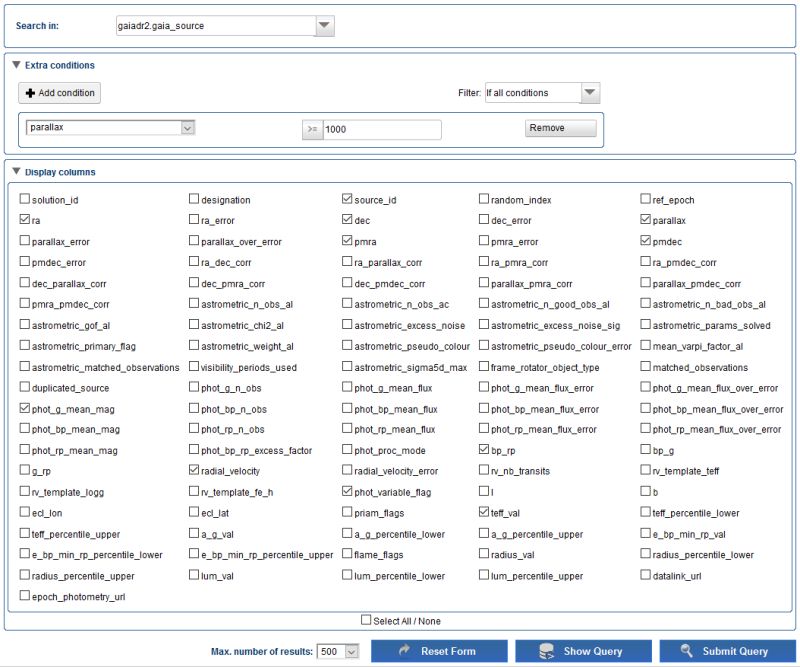
I have only one filter (Extra Conditions), the parallax, it must be higher than 1 arcsec, = 1000 milli arcsec (mas). Notice the columns I have chosen to be in the data list / file. Click on the button "Submit Query". 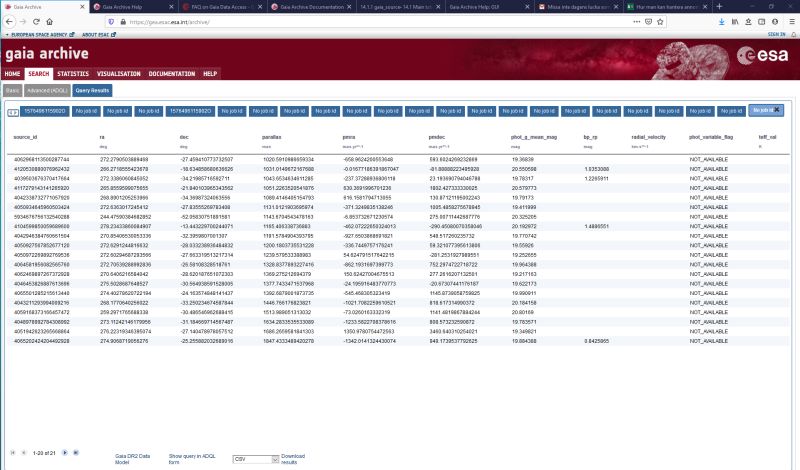
A page of the first 20 listed objects with parallax bigger than 1 arcsec is listed on the screen. Now I want to download the list in a form that I can open in Excel, I chose the format CSV and click the "Download results". Open office (Excel):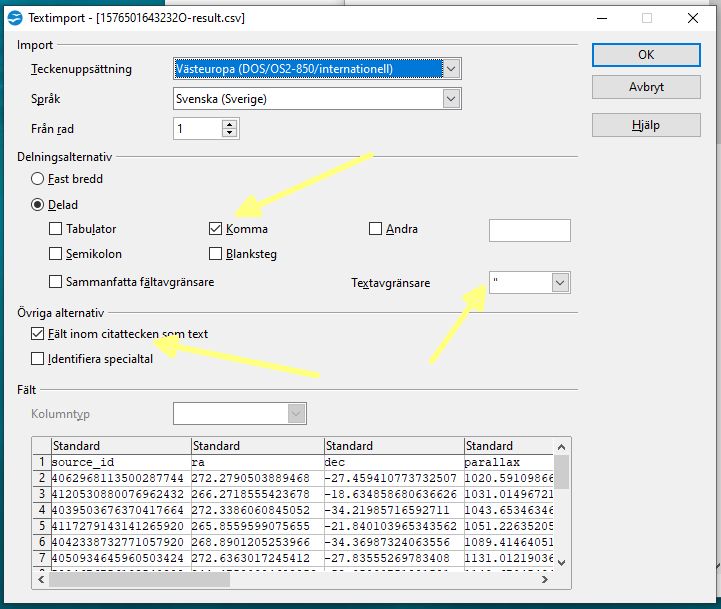
When I import the CSV file to Open Office (about the same as Excel) I must first setup some parameters. In the CSV file the "," is used as field separator ("Komma" in Swedish). 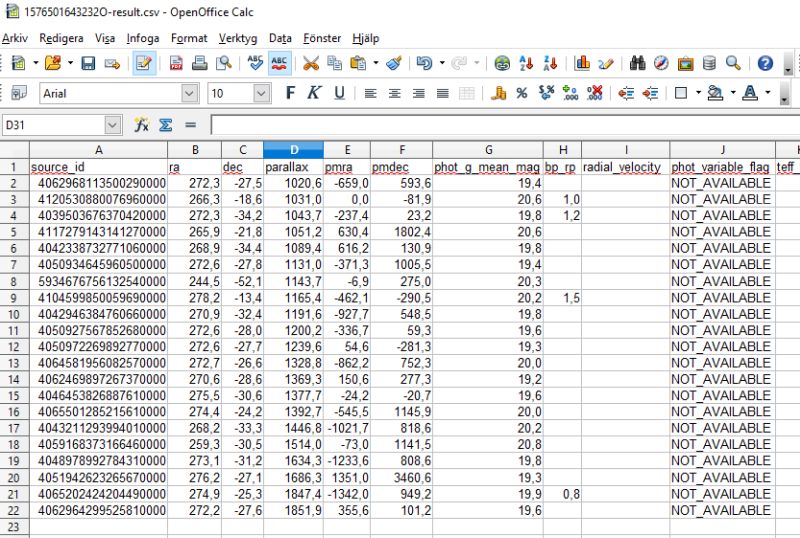
I live in Sweden and we has the coma "," as decimal separator, not the common dot ".". I search and replaced all cells with a "." with a "," that shall be used as numbers. RA and DEC is in decimal degrees, a bit strange that RA is limited around 270 degrees, and what kind of objects are these ? Maybe just some error in the data, have to look a bit deeper in this. Parallax is in milli arcsec. Radial velocity is in km/sec per year. bp_rp is the blue magnitude minus the red magnitude. My friend Lars wrote to me and told there are no known stars at this distance. Of course I shouldn't called them stars as I did first, it's objects. These objects are of very low magnitude, but I don't think they are brown / white stars, at least I never heard we have any that close. They are also too far away to be asteroids in our solar system. It could be so simple that it is just something wrong with the data. I will add more filters till next time I search data to get real stars. |
Some useful links with information:
One limitation in Gaia data is that no bright stars are included. Gaia is optimized to detect weak stars and all star visible to the naked eye over saturate the CCD sensor and not usable. |
|
Credit:
Gaia Collaboration et al. (2016): Description of the Gaia mission (spacecraft, instruments, survey and measurement principles, and operations). |
| Go Back to content |
| Go Back |